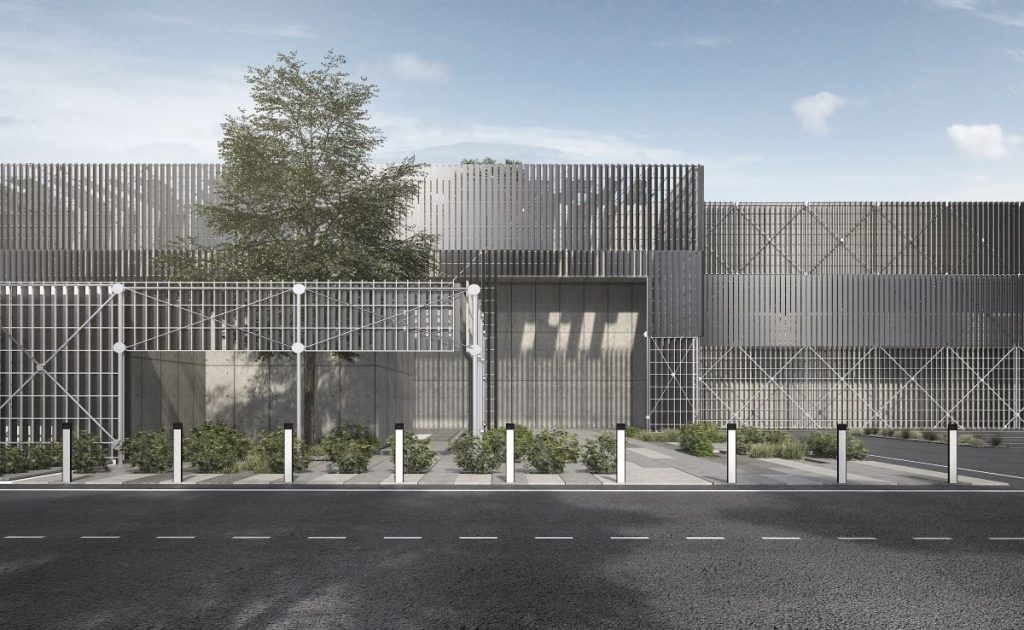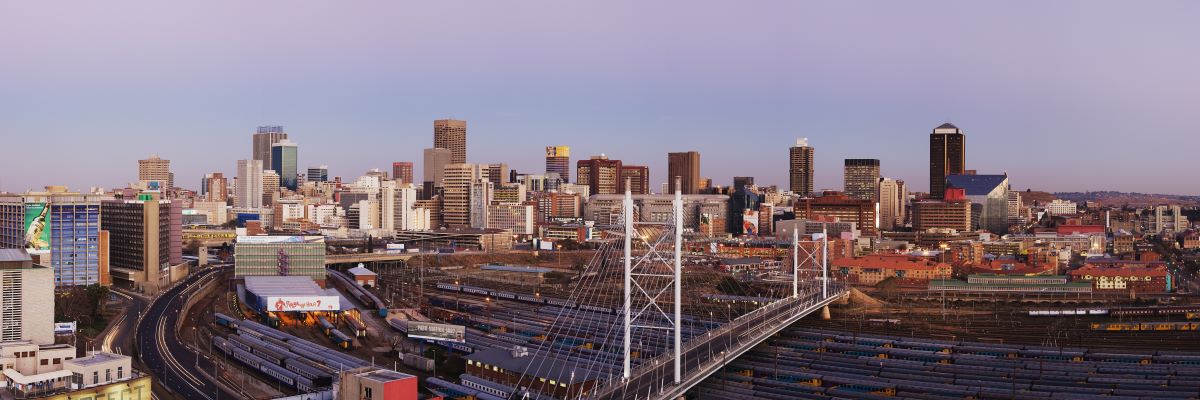
Are Animation Studios in South Africa any good?

South Africa is truly a hotbed for content creation on a budget for foreign country’s. We provide a top notch service, from a highly developed market, at extremely favourable exchange rates. Which means, provided you did your due diligence, you should be able to extend your content creation budget extensively. We have eleven official languages but English remains our business language, which means you will enjoy top notch content creation without the miscommunication and conflicts. It also means you will be working with agencies that have extensive experience with other cultures and languages.
In this article we will be breaking down exactly what an animation studio in South Africa is typically comprised of, providing tips to ensure you get the most out of each role. We will also be covering the various benefits of working with an animation studio in South Africa, especially from a foreign country’s perspective.
What is an Animation Studio in South Africa?
Script Writers
Script writing for animation is a little different from tradtional video scripts in that they are usually accompanied by a storyboard of sorts. The storyboard plays a vital role in providing a rough visual interpretation of the animated video. This is important because unlike traditional video, where a shot can be visualised, with animation every part is being created from scratch or some form of a template. Either way, the animation could look nothing like real life and as such the storyboard helps the client interpret the proposed visuals. With traditional video your script has an accompanying shot list, as the location is an actual place. With animation we are describing a potential location that is yet to be created. In other words, with traditional video it is easy to reframe a shot to change the visual intepretation, whereas with animation we are recreating a whole new scene. With that being said, here are a couple of tips to get the most out of the script and storyboard:
The more complex the subject matter, the more editorial steps are need to finalise the script. This is especially the case when dealing with training material that is complex in nature and learning outcome based. A typical video script may have one to two drafts, but with a training script there may be up to five.
Write like you speak. It does not help to write a script that cannot be read out loud, so make sure you adapt your writing to match the recording process. Avoid using too many acronyms, jargon and unnecessarily long sentences. At the end of the day, the script provides a narration for the viewer, a narration that should run smoothly from start to finish.
Designers
The designers are responsible for the ‘look and feel’ of the animated video. They create the complementary design of the video. From the banners, brand representation and transition graphics, to the various call-to-actions and video intros and outros. The designers are also typically responsible for any editing that does not directly involved animating.
If you plan on producing multiple animated videos we recommend having the designers create a video template for the project. This will streamline production and aid considerably in meeting stricter deadlines. It also makes updating and repurposing content at a later stage much easier.
Animators
Animators are typically responsible for the bulk of the animation content, which means you need to manage the animators and enable them to work without bottlenecks or interruptions. One way of doing this is by having the design team and illustrators handle the storyboard, design elements and potential assets. By processing these elements and having them approved by the client, allows the animators to process them as they get approved. This is primarily the role of the project manager, ensuring that the animators are not delayed or left with nothing to work on. Speaking of which, the animators and project manager will be in constant communication regarding client feedback. That is why many animators follow a modular approach to animation, whereby each scene is created as a separate production that slots into the video template.
Illustrators
Illustrators are typically used on specialised animated videos where the assets need to be created from scratch. Examples of this would be like specialised machinery or uncommon animated assets like exotic animals. Illustrators also play a vital role in 3D animation as often there is a ton of 3D modelling recreated from illustrations. The illustrators also assist with a more detailed storyboard in the case where the visuals and subject matter are complex by nature.
Audio Engineers
Audio engineers in animation studios are responsible for creating and recording sound effects and dialogue for animated projects. They work with the studio’s post-production team to ensure that all sound elements are working together to create a cohesive, immersive experience for the viewers. Audio engineers also help develop, mix and process audio recordings for various types of video production. They must have a mastery of different audio technologies, such as digital recording equipment, software and microphones, in order to achieve the desired results. Additionally, they need to apply creative techniques and be able to communicate effectively with everyone involved in the production process.
Sound Recording
Creating sound recordings for animations often begins with storyboarding. The sound designer will use the storyboard to create a sonic plan that includes all of the sounds needed for the animation. Once this is finalised, they will proceed to recording appropriate sounds and layering them in order to create a complete and realistic soundscape. This can involve sampling existing sounds, creating digital sounds from scratch, or recording voice artists. Once all of the elements are recorded and layered together, they are then edited and mixed together to produce the completed sound track for the animation.
Bonus Tip:
When starting out with a new animated video, we recommend deciding on the music from the outset. This is because the music determines the tempo of the video, which in turn affects the editing style, assets used and even the sound recording.
Project Manager
A project manager in an animation studio is responsible for overseeing and coordinating the entire production process from start to finish. They are usually responsible for developing a budget, creating and distributing schedules, assigning tasks to team members, scheduling meetings and other important tasks associated with the successful completion of an animation project. The project manager must have excellent communication skills as well as technical knowledge of the software and hardware used in the production process. Additionally, they must have strong organisational skills to be able to track progress, manage resources effectively and ultimately ensure that the project comes in on time and within budget.
Bonus Tip:
You can tell a lot about an animation studio simply by reviewing previous project plans and service-level agreements. Every content production project comes with unique challenges and opportunities, how well these are leveraged is directly related to the management of the project. For example: A simple delay in the review of a first draft could cost the project deadline, especially when there are multiple parties involved, which is why proper coordination is essential.
Marketing Strategist
A marketing strategist in an animation studio is responsible for developing and executing strategies to market the company’s products and services as well as its overall brand. This includes creating effective campaigns, researching target audiences, analysing customer data, understanding current trends in the industry, designing promotional materials, and measuring results. The strategist must understand the various industries and their unique needs so that they can create successful campaigns that speak to the target audience. Additionally, they should have strong communication skills to build relationships with potential customers and partners. They also assist with your publishing and distribution strategy and play a key role in the success of your content. Keep in mind a piece of content is only as successful as its accompanying strategy. You could have the greatest animated videos on the planet, but if no one sees them, all that effort was for nothing.
Additional Roles
Besides these typical roles, they might also employ the services of translators, professional voice artists and additional talent depending on the style of video. Keep in mind that despite the focus of our article being on animation, many animated videos include traditional video methods and skills. For example: A training video may start with a video interview of a person, which then transitions into an animation as the video continues. This is why we recommend you find an animation studio in South Africa with extensive experience in traditional video. Working with an agency that can provide a bespoke service from inception to execution is vital in ensuring your full creative freedom and maximum ‘bang for your buck’.
Bonus Tip:
Before deciding on your content medium and style of video, consult your video agency. Each style of delivery and content medium come with their own advantages and disadvantages, each of which is better suited to different applications. Sometimes you might have the right idea on how you want to present a topic or message but may be inexperienced when it comes to the logistical and production implications of each.
What are the 5 types of Animation?
2D Animation
2D Animation involves creating movement through the gradual adjustment of picture frames to be played in a particular order, that when played at the right frame rate, makes the subject appear to be animated. This is done in a two-dimensional space, where the parameters for the objects are height and width. 2D Animation has become considerably more accessible with new production tools, making it a preferred medium for content delivery in most industries.
3D Animation
3D Animation involves the production and rendering of 3D modeled objects in a digital environment or background. 3D Animation takes considerably more resources and expertise than 2D Animation, but the results are very detailed life-like renditions of real life objects or people. This style of animation is perfectly suited for specialised training, where the subject is a complex in nature, like heavy machinery.
Stop Motion
Stop motion involves taking individual frames of a live object and making gradual changes to each frame so that when the frames are edited together at the correct frame rate, will result in an animated clip. This style of animation is less popular these days, but can deliver a very stylised animated video. Do keep in mind, this style of animation is incredibly time-consuming.

Motion graphics
Motion graphics involves the introduction of animation to traditionally static subjects, like text and numbers. Animated infographics also fall under motion graphics, and are an invaluable medium for delivering otherwise dull administrative information, like numbers and statistics.
Whiteboard Animation
This involves an animated hand drawing every frame of the video piece by piece. This style of animation is perfect for complex systems or functions, as you can break down each element layer-by-layer. Contrary to popular belief, there are often colours featured in whiteboard animations.

Benefits of using an Animation Studio in South Africa
From an experience point of view, animation studios in South Africa are some of the most experienced on the continent. We have highly competitive business markets in Johannesburg, Pretoria and Cape Town. This means you will find highly experienced studios with bespoke offerings, that are used to meeting short deadlines. As we know, the more experienced your team is the more you can push your animation budget.
South Africa has eleven official languages which means animation studios in South Africa have extensive experience working with multiple languages, including translation services, voice artists and subtitles.
South Africa is a cultural melting pot, which means as content producers we are highly experienced in working with different cultures and relating them in a relevant manner. This is also a major advantage in documentary-style video where filming and interviewing different people from other cultures could be a consistent challenge.
Additional Recommendations
One of the major advantages of animation as a content medium is that the assets can easily be repurposed for other application. From recycling character models to standardised logo animations and animated backgrounds. Plan your content carefully and work around a content strategy to maximise each asset you produce.
When working remotely on a project, make sure you establish your channels of communication and collaboration in advance. While setting these up, plan all your feedback sessions as well. Each additional member involved in the project will add delays to production if not planned for.
How to find an Animation studio in South Africa

The first step to finding the right animation studio for your project is to narrow down your list to the most competitive markets. In the case of South Africa, you are looking for company’s based in Gauteng (Pretoria and Johannesburg) and the Western Cape (Cape Town). These two markets are the most competitive in the country. Operating in a highly competitive market means more projects, shorter deadlines, bigger clients with even bigger requests, higher production value, and of course, marketing expertise to stay competitive. The more competitive the market the quicker suppliers have to adapt to stay ahead of their competition, it creates an environment that breeds excellence.
Once you have identified your preferred market, the next step is create a shortlist of potential suppliers. In order to do this there are a couple of important considerations:
Portfolio
Reviewing an animation studio’s portfolio is an important part of deciding which studio to work with. Not only should you get a feel for the types of projects that the studio has completed, but you should also take into consideration the quality of their work and the complexities of their projects. While it’s important to consider all aspects of a portfolio, one key element to look for is how well the style and tone of each project reflects your own vision and values. Pay close attention to how creative solutions were implemented, how quickly deadlines were met, and any client testimonials. We also recommend asking the potential supplier how they propose we present our animation ideas. This will give you a good idea on their creative capabilities and versatility as an animation studio.
Publishing and Distribution Strategy
For many, content production ends when the content has been finalised. The issue with this is that marketing has become so complex and integrated, that in order to produce a piece of content you need to have a clear marketing strategy in place for it. Why? Because without these considerations your content might not be properly optimised for those platforms. Sometimes its a matter of structure, other times there is unique formatting involved. Essentially if you want to produce animation that generates results, you need to find a supplier that has an intimate knowledge of marketing. So when you review their content, ask to see the context in which it was presented and how well it performed. We live in a world where every action can be monitored and reviewed, so make sure you leverage that when looking for an animation studio in South Africa.
Customer Service and Project Management
Structured feedback is an essential part of any successful project plan. It ensures that each team member’s ideas and opinions are heard, and it gives everyone on the team a clear understanding of what needs to be done. The best way of testing this is by requesting a plan from a project of a similar nature, along with an SLA (Service-Level Agreement). This will paint a clear picture of the suppliers processes, customer service and their ability to manage the project. By providing clear and concise feedback in a structured way, you can ensure that all tasks are completed on time and within budget. While reviewing their documentation, take note of the client feedback process and the number of drafts provided per video. Feedback makes or breaks an animation project, so make sure your potential supplier demonstrates an innate ability to facilitate it well. One last point about customer service, is that suppliers do not typically put their client testimonials on a public portal. If you wish to review them, make sure to request them separately. Among all the marketing speak, a proper and genuine client testimonial can be refreshing to see.

Working with an Animation Studio in South Africa
Working with an animation studio in South Africa as a foreigner may seem daunting, but does not need to be if you prepare accordingly. It’s important to do your research and talk with other correspondents in the area to get an idea of the working dynamics and culture at the studio you’re looking to work with. This can be achieved by reviewing client testimonials and case studies. Make sure you understand any language barriers, cultural nuances, and have realistic expectations in terms of timing and communication. When communicating with an animation studio in South Africa, be clear on what you need, what your timeline is and what resources you have available. Being polite, patient and understanding can ensure that your collaboration leads to success!
Animation Rights
Animation production in South Africa is becoming an increasingly popular and lucrative activity. There are numerous legal rights associated with animation productions, including copyright, trademark, privacy and other related rights. A comprehensive guide to understanding these rights is essential for animators and producers alike. It’s important to obtain the correct licenses before beginning any production work and be aware of any potential issues that may arise throughout the course of the project. Understanding the laws and regulations surrounding animation in South Africa can help protect your projects from potential legal ramifications and ensure a successful finish. When in doubt consult your chosen supplier, they will be well-versed in all legal implications of animation production.
International prices and budget
Outsourcing to South Africa can be a great way to save money and get quality work results. Prices of services in South Africa are lower than prices overseas, meaning that businesses can potentially reduce their costs drastically while still getting high-quality work done. Additionally, budget considerations must be taken into account when outsourcing to South Africa. It is important to do research and understand the cost structure of various services in order to make sure that the result saves the company money and time in the long run. When in doubt, review your supplier’s service level agreements. SLA’s are a great indicator of project costs and structuring.
Dealing with time difference and language barriers
Working remotely has its own unique set of potential challenges, such as dealing with different time zones and language barriers. For those who work in international teams, coordinating between colleagues is absolutely vital. It’s important to plan ahead and use tools such as video conferencing or instant messaging services to ensure that everyone is on the same page. In order to ensure effective communication, it’s often best to establish a few ground rules for remote working and make sure everyone is aware of them before getting started. Additionally, making sure that everyone is made aware of any potential changes to the normal schedule early on can help reduce confusion later down the line. Set up your channels of communication and collaboration in advance and have a detailed project plan set up to ensure there is proper structure in place at all times.
Understanding the local culture and norms
Working with a South African animation studio can be very rewarding, but it is important to understand the local culture and norms first. Being aware of the country’s history and understanding the different customs can help ensure that everyone involved in the project feels respected. It is also beneficial to have a good understanding of South African communication styles so that everyone can collaborate together effectively. Finally, respect for traditional values and patterns should be the foundation for any collaboration with a South African animation studio.
Building Trust and Relationships
When entering a partnership with an animation studio in South Africa, it is essential to prioritise trust and relationship-building. South Africans place a significant emphasis on personal relationships in business dealings. Taking the time to get to know your counterparts, sharing meals, stories, and mutual interests can go a long way in establishing trust. This rapport not only fosters a smoother working relationship but can also lead to future collaborations and recommendations.
Understanding the Technical Infrastructure
South Africa boasts a solid technological infrastructure, which means collaborating on animation projects can be seamless. However, being aware of the available tools, software, and platforms commonly used by studios in the region can ease the collaboration process. Ensure your teams are well-aligned technologically, and consider having some training sessions if there’s unfamiliar software in use.
The Power of Face-to-Face Meetings
While digital communication tools are invaluable, there’s something to be said about face-to-face interactions. If feasible, consider visiting the animation studio in South Africa at the start of the project or during pivotal milestones. This gesture not only demonstrates commitment but also allows for better understanding and quicker resolution of any issues that may arise. If visiting in person isn’t an option, regular video calls can be a suitable alternative.
Adapting to Workflow Dynamics
Each animation studio will have its unique workflow, and studios in South Africa are no different. It’s beneficial to familiarise yourself with their workflow dynamics early on in the collaboration. This adaptation can lead to a smoother project execution, with fewer misunderstandings and hiccups.
Innovative Techniques and Emerging Trends
South Africa’s animation industry is known for its innovative techniques and willingness to experiment with new trends. As a foreign collaborator, it’s exciting to be part of this evolving landscape. Keeping an open mind and being willing to try new methods can result in unique and compelling animation work. Stay informed about the latest trends in animation and how South African studios are incorporating them into their projects.
Effective Project Management
Effective project management is key to the success of any animation project. This involves clear communication, setting realistic milestones, and having contingency plans for any unforeseen challenges. Utilising project management tools and regular check-ins can help keep the project on track and ensure that all parties are aligned with the project goals and timelines.
Cultural Sensitivity in Content
When working with a South African studio, it’s important to be culturally sensitive in the content that is being created. Ensuring that the animation does not perpetuate stereotypes or cultural inaccuracies is crucial. Engaging with cultural consultants or local experts can be a valuable step in creating content that is respectful and authentic to South African cultures.
Leveraging Local Talent and Resources
One significant advantage of working with animation studios in South Africa is the opportunity to leverage local talent and resources. South Africa is home to a diverse pool of skilled animators, artists, and technical experts who bring a unique perspective to animation projects. Collaborating with local talent not only supports the South African animation industry but also adds a distinct flair to your project that might not be achievable elsewhere.
Optimising Communication and Workflow
Effective communication is paramount in international collaborations with South African animation studios. Establish a robust communication plan that accommodates different time zones and ensures all team members are on the same page. Utilising collaborative tools like shared online workspaces, regular video conferencing, and clear email protocols can help mitigate misunderstandings and keep the project on track.
Quality Assurance and Feedback
Incorporate a structured process for quality assurance and feedback. Regular reviews and approvals at different stages of the animation process ensure the final product aligns with your vision and standards. Constructive feedback is essential, and understanding the best way to communicate this with your South African counterparts can be crucial for a successful collaboration.
Project Scalability and Flexibility
Consider the scalability and flexibility of the animation project. South African animation studios often have the capability to scale up or down based on project requirements. Discuss the scope for scalability in advance to ensure the studio can accommodate any changes in project size or direction.
Understanding the Payment and Invoicing Structure
Navigating the financial aspects of working with an overseas studio is crucial. Understand the payment terms, invoicing structure, and any currency exchange implications. Ensure transparency in all financial dealings to avoid any confusion or disputes later.
Respecting Intellectual Property Rights
Intellectual property rights are a critical aspect of animation production. Ensure that both parties understand and respect these rights. Discuss and agree upon the ownership of the final animated product and any source files or assets created during the project.
Post-Production Collaboration
Consider the post-production phase, which can be as crucial as the animation process itself. Discuss in advance how post-production elements like editing, sound design, and voice-over will be handled. Determine if these will be managed locally within South Africa or if they will require collaboration with teams in other locations.
Partnering with an animation studio in South Africa can be a highly enriching experience, both in terms of the quality of work produced and the cultural insights gained. With preparation, mutual respect, and understanding, businesses can tap into the burgeoning animation talent in South Africa and achieve fantastic results.
Looking for an animation studio in South Africa? Get in touch with our team today!
We are a leading video production company in Johannesburg and have one of the top learner management systems in South Africa. We specialise in Video Production, Photography, Graphic Design, eLearning Development, Web Design, Animation and Creative Consultation. | info@oliverkarstel.co.za | www.oliverkarstel.co.za | IG.com/oliverkarstel






